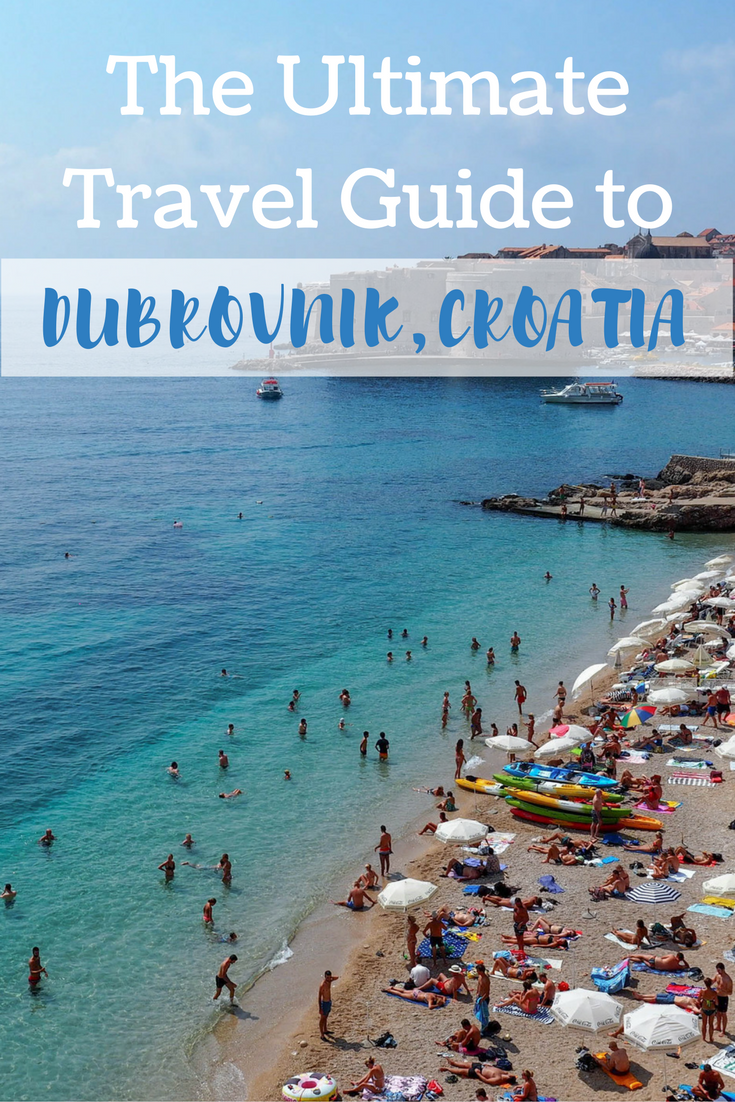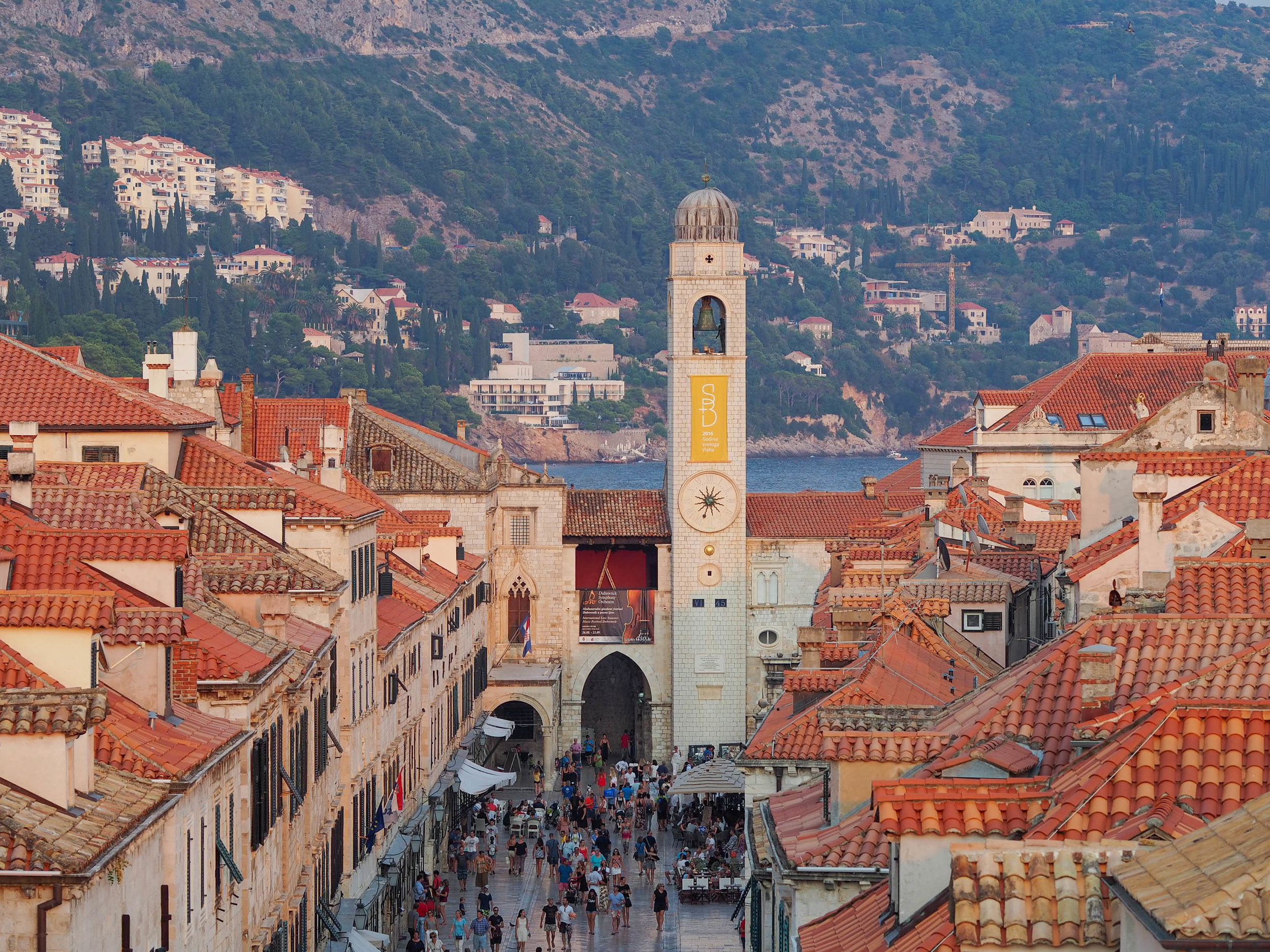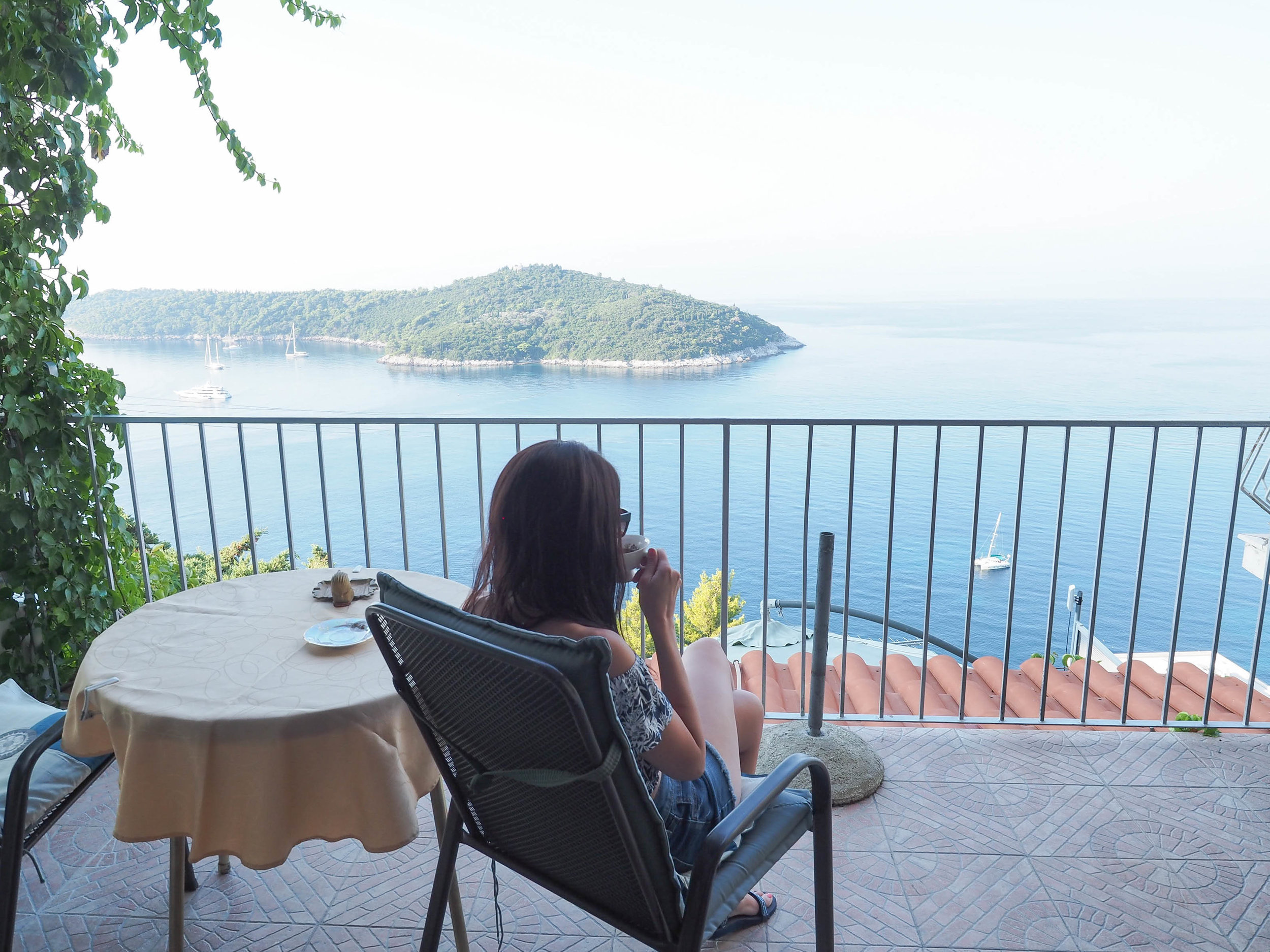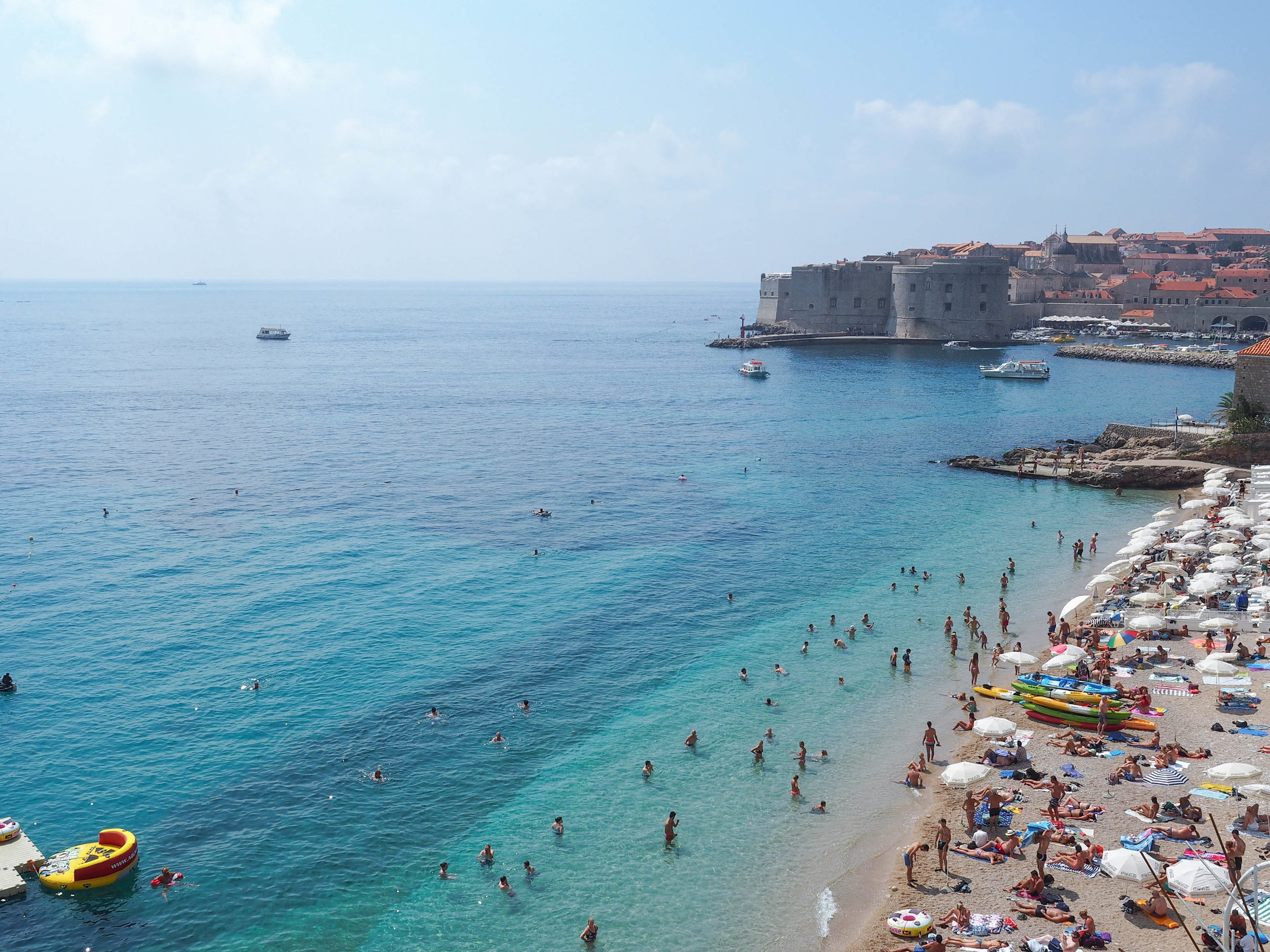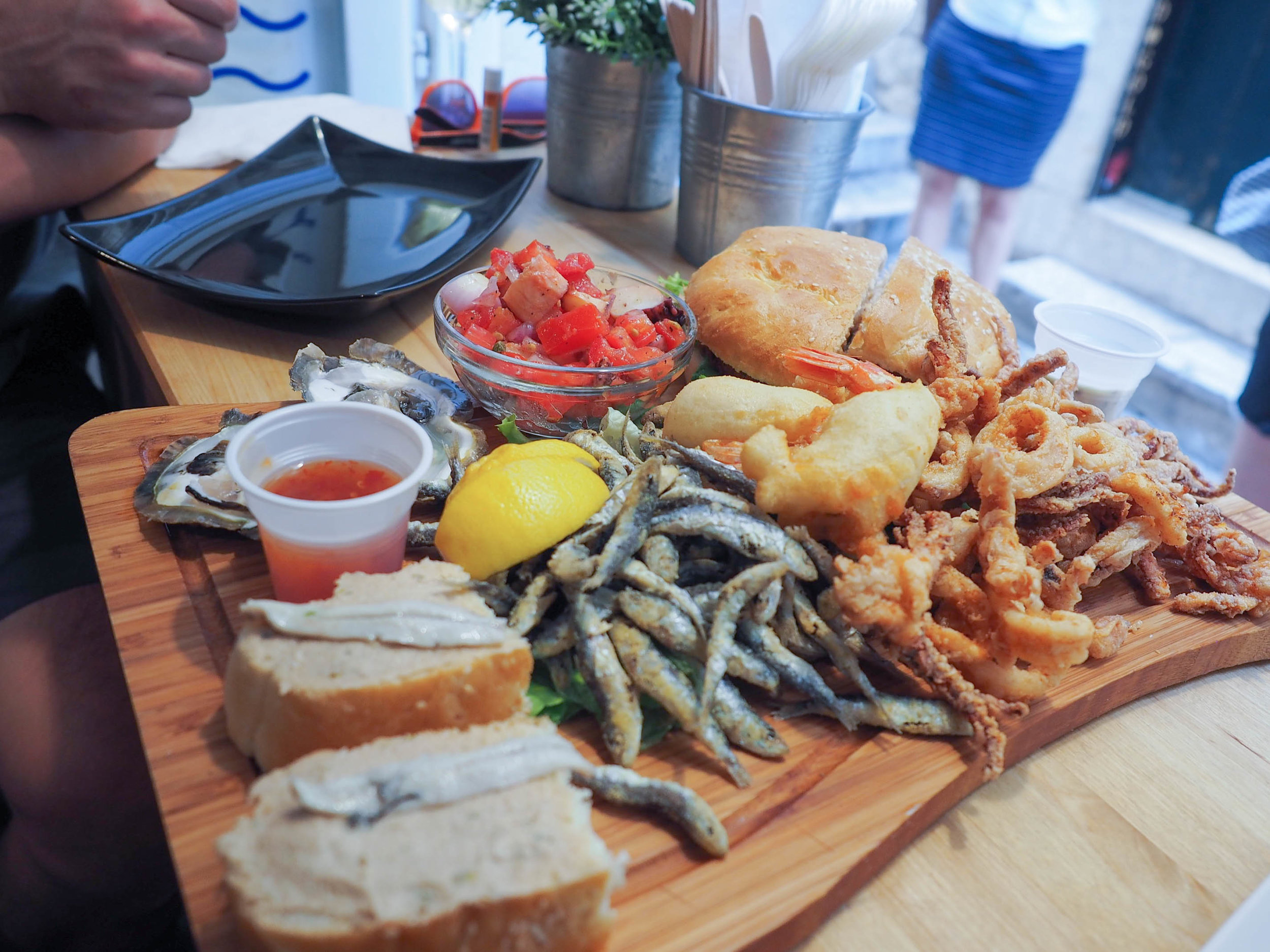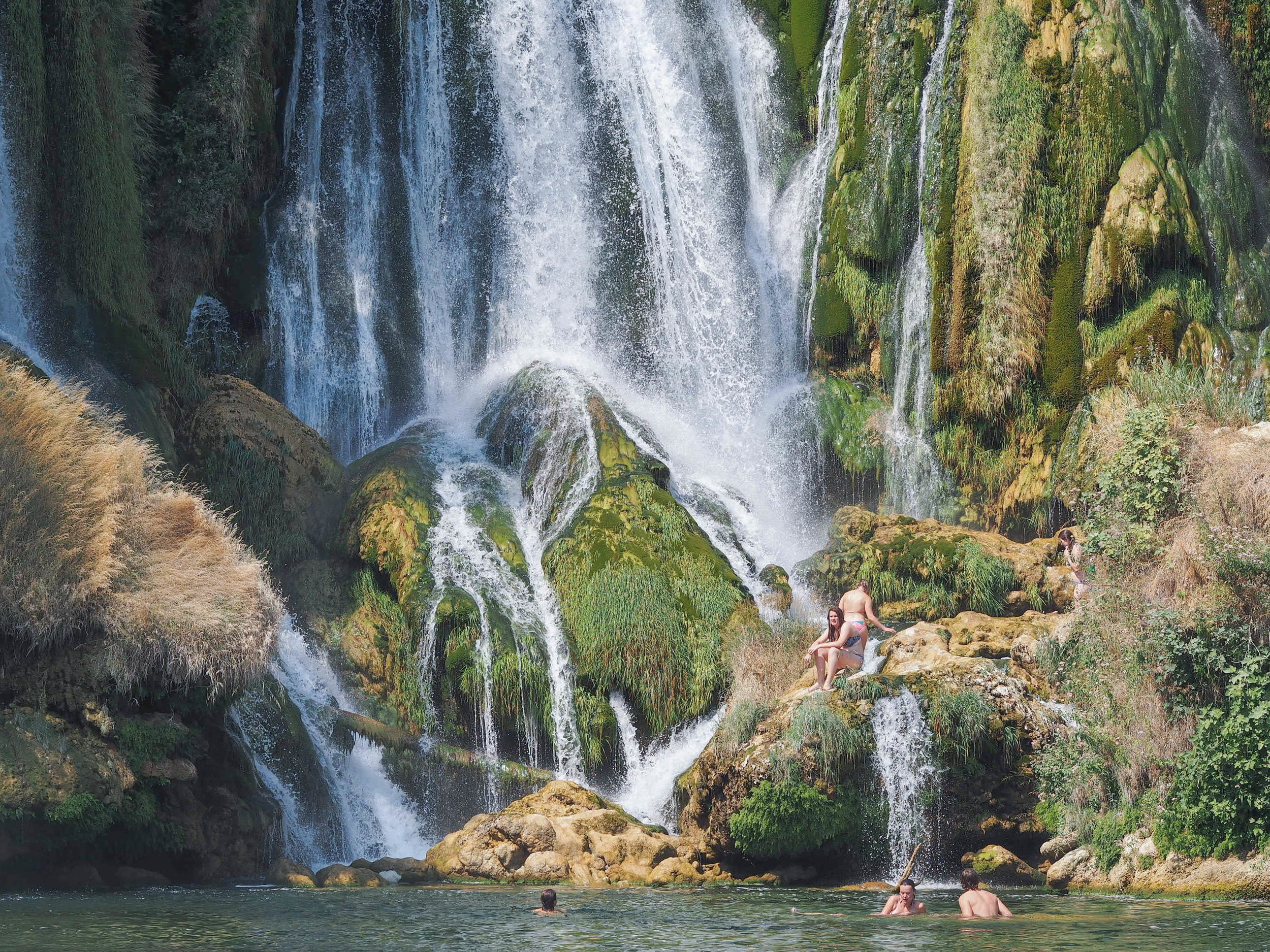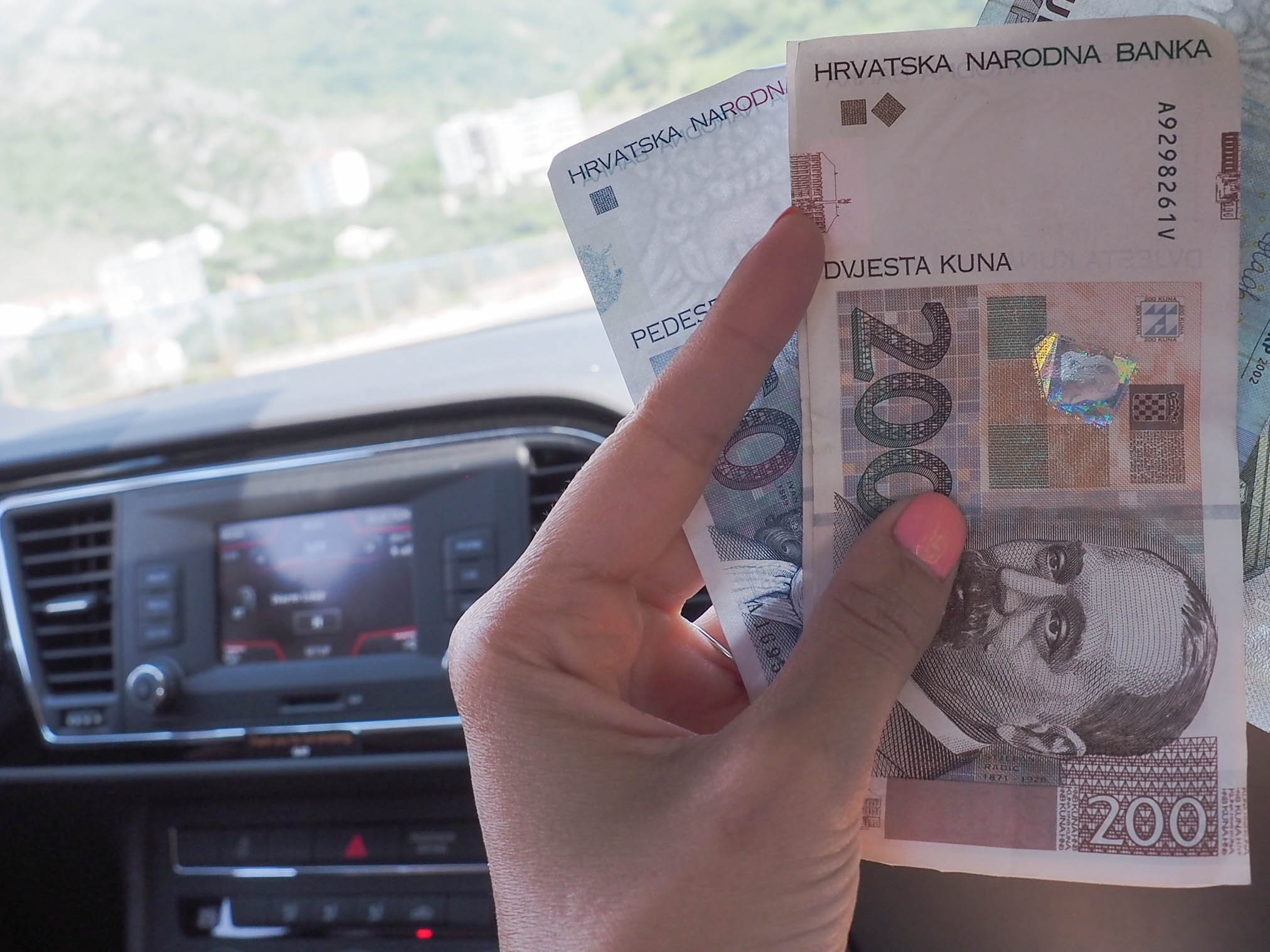The sights and views in Dubrovnik are stunning and completely exceeded all expectations. The town is filled with beautiful scenes around every corner, but there is also a delicious restaurant scene in Dubrovnik, which made the trip that much better.
About Dubrovnik, Croatia
Often referred to as the “Pearl of the Adriatic,” Dubrovnik is located in Southern Croatia along the Dalmatian Coast. Home to around 42,000 people, it’s a relatively small city. With a beautifully-preserved Old Town and pristine, turquoise-water beaches, Dubrovnik has something for every type of traveler.
How To Travel to Dubrovnik, Croatia
Travel by Plane to Dubrovnik
Dubrovnik is most easily accessed by plane. Dubrovnik Airport (DBV) is located about 20 minutes outside of the city and has flights arriving from all over Europe.
The most affordable transportation option to get to the city is the Dubrovnik Airport Shuttle Bus. The bus will take you to Pile Gate next to the Old Town and costs 40 kunas for a one-way ticket. If you want to ride the shuttle back to the airport for your departure flight, you can purchase a roundtrip ticket for 70 kunas.
The other, more expensive, transportation option from the airport is to hire a driver or take a taxi. Both options are around 30-35 euros.
Travel by Car to Dubrovnik
If you are traveling in other parts of Croatia before heading to Dubrovnik, your best option is to catch a bus or rent a car. I rented from Sixt and had a great experience. Bus routes are available from many cities throughout the country. You can check the schedule and routes online.
Note that if you are coming from Split or any other northern parts of Croatia, you will have to pass through Bosnia-Herzegovina to get to Dubrovnik — which means border control. Make sure you have your passport ready!
When to Travel to Dubrovnik, Croatia
First, you need to decide what you want to do in Dubrovnik. If the beach is a priority, you’ll need to go sometime between May and September for the best beach weather. Dubrovnik does get very busy in the summer—I was told July is the worst, with both the crowds and the heat.
If you don’t care much about the beach and swimming in the Adriatic, consider visiting in the offseason. The perks of visiting during the winter? No crowds and lower prices. The cons? Many restaurants shut down once the summer tourist season comes to an end.
I visited Dubrovnik the last week of August and the first week of September — I loved it! The weather was still plenty warm, allowing us to spend our days at the beach and swimming in the sea.
While tourism is still in full effect, the busy season is starting to die down at this time, meaning the crowds were no longer at peak-of-summer levels. The Old Town was still full of people, mostly during the daytime, but the crowds were tolerable.
TRAVEL TIP: Much of Dubrovnik’s crowds are due to the fact the city is an extremely popular stop on many cruise routes. To help in avoiding crowds, I checked Dubrovnik’s cruise ship schedule online to see which days had the most cruise passengers docking. This was a HUGE help. I planned our day-trips outside of Dubrovnik for the dates when the city was scheduled to see the most cruise ship passengers.
HOW LONG TO STAY IN DUBROVNIK
You can see all of the guidebook-recommended sights in one day if you’re tight on time, but Dubrovnik is a great place to wind down and relax a bit if your schedule allows.
I stayed a total of six nights in Dubrovnik. I spent three days exploring and enjoying beach time in the city, then I spent the other three days doing day-trips outside of Dubrovnik. But the goal of my trip was to relax — so two days would be plenty of time if you wanted to do a weekend trip and get a taste of what Dubrovnik has to offer.
WHERE TO STAY IN DUBROVNIK
There are a number of beautiful, oceanfront hotels in Dubrovnik — in my opinion, they are all quite a ripoff. I found the hotel prices to be anywhere from three to six times higher than the average price of an apartment rental on websites like AirBnb. I’m a big fan of staying in residential neighborhoods. It gives me a feel for what it’s like to live there.
Sobe, meaning room, is a word you might come across while searching for lodging. A popular form of accommodation in Croatia, renting a sobe typically gets you a private room in a home. While I personally did not go this route, I heard it’s a great way to have an authentic, culturally-enriching experience — and it’s usually the most affordable lodging option.
Many travelers like to stay inside the Old Town walls, but staying outside of the walls is just as nice and tends to be cheaper. I rented a private, one-bedroom apartment up the hill, less than a mile walk from the Old Town. Staying in an apartment was cheaper, more spacious — oh, and we still had a million-dollar view from our bedroom balcony.
WHAT TO SEE IN DUBROVNIK
Dubrovnik’s Old City Walls
Completely encircling the Old Town, the ancient walls have protected the city from invaders throughout history. Visitors can pay to walk the walls and indulge in a history lesson and priceless views — a must-do!
Cable Car & Mount Srd
A three-minute ride on Dubrovnik’s cable car will lead you to the top of Mount Srd. Offering a panoramic view over all of Dubrovnik, you will want to make sure you have your camera with you. While the ride is a little pricier than I’d like it to be, it’s worth it for the photo ops.
Banje Beach
It’s extremely popular and crowded in the summer, but that didn’t stop me from enjoying myself. I was out at Banje Beach as early as 8 a.m. some mornings — the clear, calm water is the perfect place for a scenic swim.
WHERE TO EAT IN DUBROVNIK
In no particular order, here are just a few of my favorite restaurants in Dubrovnik.
Pantarul
With an innovative style using fresh, local, seasonal ingredients, Pantarul is a stand-out in the Dubrovnik food scene. Located a cab ride away from Old Town, I wouldn’t show up here without reservations.
Buffet Skola
It’s hard to find a quick, cheap bite to eat in the Old Town, but it does exist! Buffet Skola offers an affordable menu, with sandwiches made with fresh, house-baked bread — yum!
Barba
Located in the Old Town, this modern seafood-meets-streetfood joint is a must-visit in my book. Barba does an amazing sampler platter for two — the perfect way to taste everything on the menu.
WHAT TO EAT IN DUBROVNIK
In addition to suggesting specific restaurants, there are few dishes that I found to be particularly tasty in Dubrovnik.
Dalmatian Peka
A signature dish to the region, various meats are slow-cooked under an iron bell. This dish is an absolute MUST and needs to be ordered in advance, as it takes three hours to cook.
Octopus Salad
Served cold, octopus salads appear on many menus throughout Dubrovnik — and it was always delicious. Definitely give a few of these a try if you’re into octopus.
Oysters
Many restaurants in Dubrovnik bring in oysters from the famous, nearby oyster-town of Ston — give them a try!
Cevapi
This little minced-meat, finger-sized sausages are juicy and delicious! They can be found on many restaurant menus.
WHERE TO DRINK IN DUBROVNIK
D’vino Wine Bar
A cute little spot in the Old Town, D’vino Wine Bar does awesome sampler flights, allowing you to taste a variety of Croatian wines.
Glam Cafe
Located directly across from D’vino Wine Bar, Glam Cafe is the place to go if you’re interested in trying a Croatian craft beer.
WHAT TO DRINK IN DUBROVNIK
Croatian Wines
You probably don’t think of wine when you think of Croatia — neither did I. Croatia actually produces a ton of wine, it just isn’t heavily exported so most of us are not familiar with Croatian wines. One of the most popular wine regions is the Peljesac Peninsula — keep an eye out for wine from this part of the country, not far from Dubrovnik.
Rakia
A fruit-brandy that is extremely popular in Croatia and the neighboring countries, you will definitely see this spirit on every bar menu. Some types I tried were incredibly strong and intolerable, while some were delicious. Common flavors are plum, apricot and honey.
Croatian Beer
You’re in Croatia — drink like a Croatian! The common beer you will see here are Ozujsko, Karlovacko and Pan.
DAY TRIPS FROM DUBROVNIK
Ston, Croatia
About an hour north of Dubrovnik, Ston is a must if you are an oyster lover. Known for salt harvesting and oyster farming, Ston is also home to the second longest wall in the world — second to the Great Wall of China. I ate the best-grilled oyster of my life in Ston!
Mostar
Known for the iconic bridge, Stari Most, Mostar is a city filled with interesting history and scars from the recent war. Join a tour group or rent a car and make the 2.5-hour journey to Mostar for the day.
Kravica (Kravice) Waterfalls
If you have time, you can make a pit stop on your way to Mostar at Kravice Waterfalls. Actually, do everything you can to make it here — the waterfalls blew me away!
PACKING ESSENTIALS FOR DUBROVNIK
Waterproof Sandals
Dubrovnik’s beaches are rocky, not sandy, so durable waterproof sandals are a lifesaver during the summer in Dubrovnik. Sea urchin are also common in the water and can cause nasty, fun-dampering pain, so I usually wore my sandals when walking into the sea.
Sunscreen
I found sunscreen to be pricy, or hard to find, in the markets I went into around Dubrovnik. If you’re traveling in summer, plan ahead and pack an acceptable travel-sized bottle of sunscreen in your travel bag.
Summer Hat
The beaches are hot and the top of the Old Town walls are even hotter! With no shade for shelter, a hat was one of the smartest things I packed on my trip. Again, essential if you’re traveling in the summer.
OTHER DUBROVNIK TRAVEL TIPS
Electricity & Plugs
The voltage in Croatia is 220v and the plugs are two round prongs, as in most of Europe. Find out before you travel if your electronics need an adapter or a converter. Apple iPhone chargers, for example, only need an adapter.
Language Basics
Croatian is spoken in Croatia. It’s always nice to be prepared with a few basic phrases while visiting a foreign country. Here are the few that I used most:
Hello. // Dobar dan. // doh-bahr dahn
Please. // Molim. // moh-leem
Thank you. // Hvala. // hvah-lah
Yes. No. // Da. Ne. // dah. neh.
Currency
Croatia joined the EU in 2013, but still uses its own currency — the kuna. At the time of writing this, 1 USD = 6.68 Croatian Kuna.
Have you ever travelled to Dubrovnik? If so, do you have any travel tips specific to Dubrovnik? I’d love to hear them!
Like it ? Share it !
[one_half]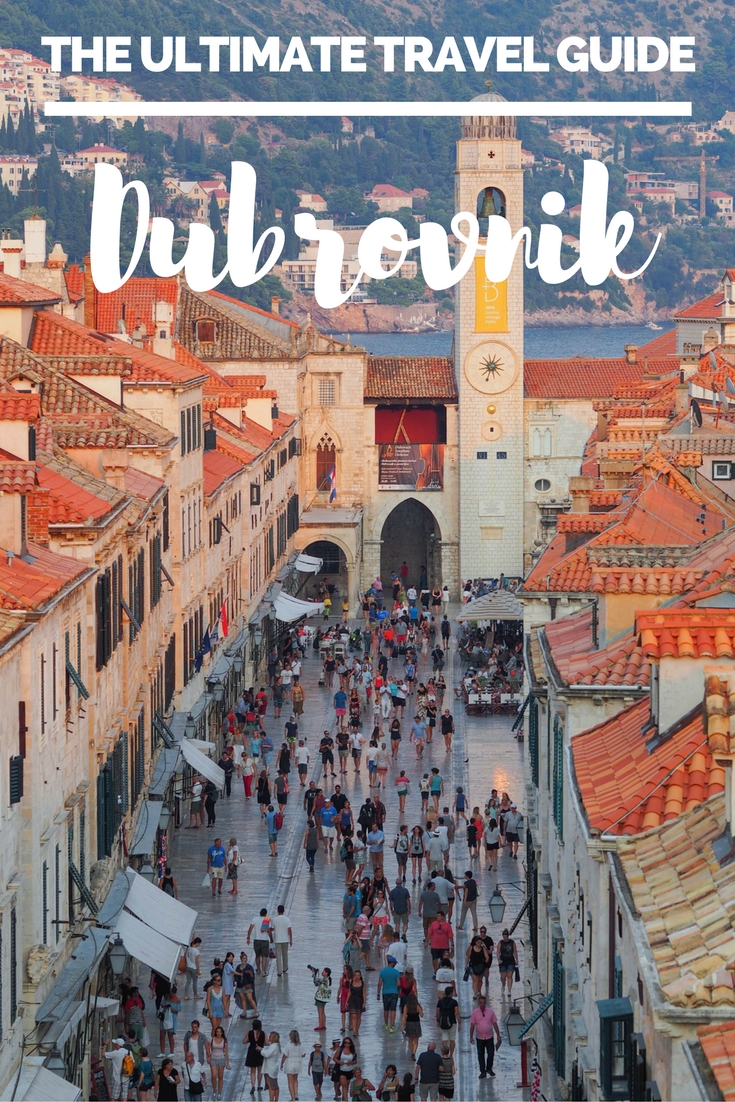
[one_half_last]